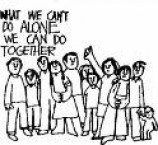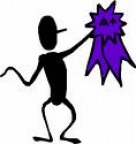Mr. Vaandering's Geology WebQuest
Teacher Page
This science-based webquest addresses the following second grade standards as outlined in Michigan Department of Education's Grade Level Content Expectations.
Earth Science
Solid Earth
E.SE.02.21: Describe the major landforms of the surface of the Earth (mountains, plains, plateaus, valleys, hills).
Fluid Earth
E.FE.02.11: Identify water sources (wells, springs, lakes, rivers, oceans).
English Language Arts
Strand I: Reading
R.IT.02.04:Respond to individual and multiple texts by finding evidence, discussing, illustrating, and/or writing to reflect, make connections, take a position, and/or show understanding.
Technology
Technology Research Tools
K-2: Use a variety of technology resources (e.g., CD-ROMs, DVDs, search engines, websites) to locate or collect information relating to a specific curricular topic with assistance from teachers, parents, or student partners.
Earth Science
Solid Earth
E.SE.02.21: Describe the major landforms of the surface of the Earth (mountains, plains, plateaus, valleys, hills).
Fluid Earth
E.FE.02.11: Identify water sources (wells, springs, lakes, rivers, oceans).
English Language Arts
Strand I: Reading
R.IT.02.04:Respond to individual and multiple texts by finding evidence, discussing, illustrating, and/or writing to reflect, make connections, take a position, and/or show understanding.
Technology
Technology Research Tools
K-2: Use a variety of technology resources (e.g., CD-ROMs, DVDs, search engines, websites) to locate or collect information relating to a specific curricular topic with assistance from teachers, parents, or student partners.
Resource Selection

There are many online sources available with information regarding solid and fluid earth features. However, safety was a big concern, as I did not want children stumbling over material that may have been inappropriate. For this reason, I selected kid-friendly search engines that would allow the students the opportunity to enter the information they were looking for. For those students less familiar with search engines, or less skilled with technology, I also provided websites that directly linked them to the information they would need to research the landforms. Likewise, I also provided a couple of videos that would enhance their understanding of landforms. However, because YouTube is not regulated for kid safety, I did not deem it appropriate for the students to search out the videos themselves. I found a couple that provided relevant information and made them immediately accessible. Between the videos, one of which presents the material to music, the search engines, the websites, and of course the database to our media center, I believe I have provided a varied set of resources that can appeal to students of different interests, abilities, and proficiency with language.
Inquiry Process

Throughout this project, I provided students with tools to keep them moving forward responsibly and intelligently. From a technical standpoint, each succeeding page of the webquest takes them to the next step in the process. It follows a natural flow, from introduction and a broader scope of their task to the actual process with specifics, finally concluding with a review and invitation to extend their learning.
At the onset of the project, the students are provided with a checklist that provides an overview of their tasks, in order, including an approximation of time they should spend on each one. As the students complete the tasks, they can easily see how far along they are in the process and they can gauge their team's efficiency. Along the way, the students are also given many opportunities to make choices as to how they will contribute to their team's project. These choices are not only empowering, but give the students a chance to select roles that meet their interests or abilities.
As the students engage in research, I provide them with a simplified version of a Multiple Sources Research Guide. The students are given a chance to select which landforms they'd like to research. Furthermore, the sources they may use are varied in complexity and format, allowing the students to make choices about how information is presented to them. They will also find notes that describe what good researches do and don't do, so that they can identify how they should go about their research.
After the students complete their research, they are provided with a couple of opportunities to put their learning to the test. One such activity involves the Video Viewing Guide, which is a twist on the Listening-Viewing Guide. The first column of this guide gives the students the chance to recall what they've learned about landforms and to identify the gaps in their learning. The video will serve to fill in some of those gaps, but the team collaboration after the viewing will help to solidify all the team members' knowledge of the landforms. Secondly, the students are asked to differentiate between similar landforms by creating a Venn Diagram online. This process will not only demonstrate their level of understanding to the teacher, but will also help to further define the unique qualities of the landforms to the students. This becomes especially important when the students are to display their learning in their presentation.
At the onset of the project, the students are provided with a checklist that provides an overview of their tasks, in order, including an approximation of time they should spend on each one. As the students complete the tasks, they can easily see how far along they are in the process and they can gauge their team's efficiency. Along the way, the students are also given many opportunities to make choices as to how they will contribute to their team's project. These choices are not only empowering, but give the students a chance to select roles that meet their interests or abilities.
As the students engage in research, I provide them with a simplified version of a Multiple Sources Research Guide. The students are given a chance to select which landforms they'd like to research. Furthermore, the sources they may use are varied in complexity and format, allowing the students to make choices about how information is presented to them. They will also find notes that describe what good researches do and don't do, so that they can identify how they should go about their research.
After the students complete their research, they are provided with a couple of opportunities to put their learning to the test. One such activity involves the Video Viewing Guide, which is a twist on the Listening-Viewing Guide. The first column of this guide gives the students the chance to recall what they've learned about landforms and to identify the gaps in their learning. The video will serve to fill in some of those gaps, but the team collaboration after the viewing will help to solidify all the team members' knowledge of the landforms. Secondly, the students are asked to differentiate between similar landforms by creating a Venn Diagram online. This process will not only demonstrate their level of understanding to the teacher, but will also help to further define the unique qualities of the landforms to the students. This becomes especially important when the students are to display their learning in their presentation.
Presentation

Learning, for its own sake, is not usually enticing to students. Learning, within the context of a real-world challenge, gives students a unique perspective that is engaging and fun. This webquest challenges students to learn about landforms in order to make recommendations to a billionaire (Bill Yinnaire) for constructing different kinds of specialized schools around the world. After the students conduct their research, they are asked to put together a presentation to Bill to teach him about various landforms and to argue which ones would be best suited for his schools. The students are given a choice of formats for their presentation, depending on their interests and abilities. These include: PowerPoint presentation, Booklet or Flipchart, or saltdough model. Whichever they choose, their final product will create a visual representation and explanation of landforms that could be reviewed by Mr. Yinnaire.
The direct audience for the presentations will, of course, be the other classmates and teacher. The indirect audience will be Mr. Yinnaire. As audience members, the students are required to watch, ask thoughtful questions, and complete a Peer Evaluation. This evaluation provides the children with a chance to analyze and critique others' work, and to be critiqued, a very important element in social development!
The direct audience for the presentations will, of course, be the other classmates and teacher. The indirect audience will be Mr. Yinnaire. As audience members, the students are required to watch, ask thoughtful questions, and complete a Peer Evaluation. This evaluation provides the children with a chance to analyze and critique others' work, and to be critiqued, a very important element in social development!
Assessment

The scope of this project, in its entirety, addresses several standards or Grand Level Content Expectations, as outlined by Michigan Department of Education. For the purposes of this assignment, only four were used, as listed at the top of this page. The summative assessment used for this project, created through Rubistar, identifies the degree to which the students were able to define, and distinguish between, the solid and fluid Earth landforms, clearly acknowledging the requirements of those content standards. It also assesses to which degree the students were able to validate their arguments/opinions with their research, which meets the language arts standard. Finally, it takes into account how well the students were able to use technology to not only access information, but also to demonstrate their learning.
Two formative assessments were used, although they were disguised as learning activities. One such assessment included the first column of the listening-viewing guide, which required students to record what they had learned about the landforms from their research. The spaces for their answers were sized so that short answers only were needed. Low-achieving and high-ability students alike could respond easily with content knowledge. The second assessment took the form of the Venn Diagrams which required the students to interpret what sets two similar landforms apart. The students could select which one to complete, could use each other for assistance, and could include as much or as little as was needed to indicate understanding.
Two formative assessments were used, although they were disguised as learning activities. One such assessment included the first column of the listening-viewing guide, which required students to record what they had learned about the landforms from their research. The spaces for their answers were sized so that short answers only were needed. Low-achieving and high-ability students alike could respond easily with content knowledge. The second assessment took the form of the Venn Diagrams which required the students to interpret what sets two similar landforms apart. The students could select which one to complete, could use each other for assistance, and could include as much or as little as was needed to indicate understanding.
